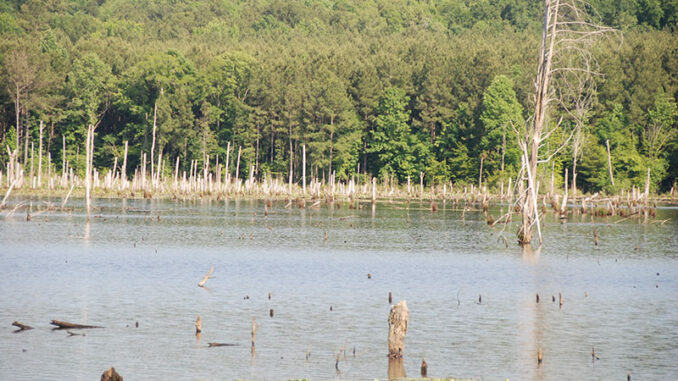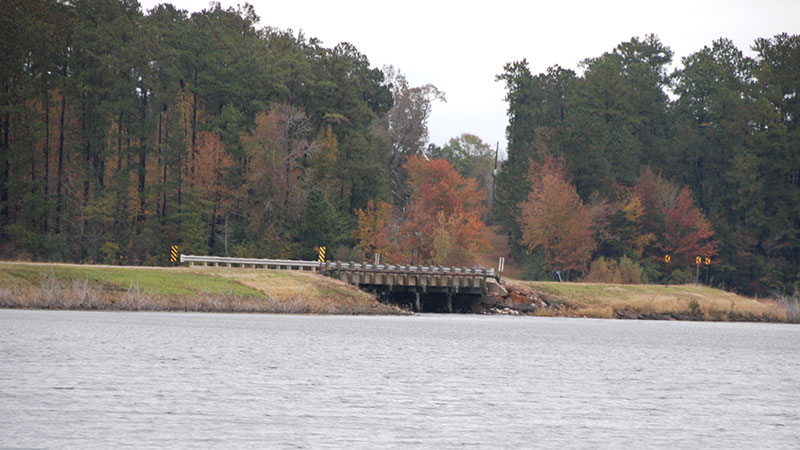
Many anglers can trace their fishing roots back to a small body of water. Whether it was a watering hole for cows, a swimming hole in a state park, or maybe just a low spot for water retention that had fish in it, a lot of memories were made walking the edges of that pond.
For pond anglers, kayaks change the game. No more walking the bank. No more trying to make long casts with heavy baits to reach deeper water. It’s the best of both worlds.
The term finesse fishing goes hand-in-hand with pond fishing but doesn’t describe the whole gameplan. It’s better to describe it as small fishing.
The smallest piece of cover, a single stump, tree limb, or even a bush hanging over the water is a big deal to a pond fish because they don’t have the same amount of room. Fish tend to use the shoreline a lot more than a big lake fish would.
Being quiet is important anywhere you fish, but especially in a pond or small body of water. Your best chance to catch that big fish off a small piece of cover is to make a long, accurate cast that lands in the edge of the bank and then slides into the water.
Soft plastics are often your best bet when fishing small water, something with very little weight that is hooked weedless. Even a big fish will spook if something slaps the water right over his head. Try to land your cast on the bank and just slide the bait into the water, across the intended target’s path. Being weedless helps you pull the bait off the bank, over cover and through shallow weeds where big fish like to hide.
Another piece of advice is to match bait size with time of day. Smaller baits are better when bright sun is out and fish can see better. At daybreak and dark, and even at night, use larger baits, to tempt a trophy-sized fish.
Similar to large impoundments, one area where many pond anglers struggle is out in the middle where the surface looks barren. Thanks to lightweight batteries and portable electronics, kayak anglers can graph those areas and find the humps and bumps, ditches and drainages that hold fish.
The downside is there aren’t a lot of choices for the fish, so once you’ve identified a good-looking piece of structure, stay back and fish it thoroughly. It’s not uncommon to make the same repeated cast to the exact same spot and catch a number of fish on consecutive casts.
Getting access
Gaining access to small waters is not as hard as you might think. First, there are public waters. These can be state and municipal lakes and ponds, state park ponds, National Forest Service land ponds or cut offs from larger public impoundments. If you are in a kayak club or subscribe to a kayak fishing page, chances are the names of these waters are mentioned quite frequently and allow open access or fee access.

Private waters are more difficult to gain entry to since you need permission. A couple of things to consider – some waters are the border of several private properties, meaning that you only need permission from one owner to access the pond, and barring some weird arrangement, would not be trespassing anywhere on the water.
Another thing to consider is that private ponds within sight of a public road get more requests to use than those not visible from a public road. Fortunately, satellite mapping sites and County GIS sites will help you locate both the property and the registered owner.
From there it’s up to you to find the appropriate way to approach the owner and ask permission to fish.
An offer to assist with cleaning up around the pond goes a long way toward building a relationship. It’s also common these days to lease fishing access to good ponds.
If you love fishing small ponds, take some time to educate yourself on the functionality and management of these waters. This information may assist you in gaining access as it gives you something to offer the landowner that others may not have offered.
Best Bets
NORTH CAROLINA
WHAT — Bluegills
WHERE — Local farm ponds
HOW —Find shallow beds and use fly rods with popping bugs or a live cricket under a cork. A tiny crappie jig on a No. 4 or No. 6 hook is also a great producer.
LAUNCH — Cleared areas on pond’s edge
INSIDER TIP — A bluegill’s diet consists primarily of insects, so when targeting these fish, keep the bait in the upper half of the water column.
SOUTH CAROLINA
WHAT — Largemouth bass
WHERE — State lakes
HOW — Bass spawn earlier in small bodies of water, then hang around in the shallows to take advantage of spawning bream. Topwater lures that incorporate shades of blue, green and gold work well, as will swimbaits and other soft plastics in bream colors.
LAUNCH — Find SC state lakes and launch points at www.dnr.sc.gov/lakes/state/index.html
INSIDER TIP — These lakes get a lot of bank fishing pressure. Focus your kayak fishing efforts on offshore cover and structure that is out of reach to bank anglers.





Be the first to comment